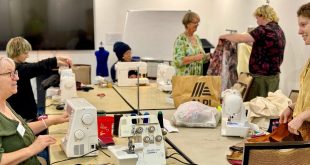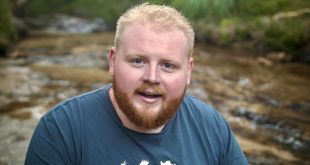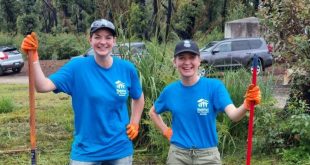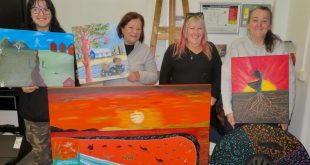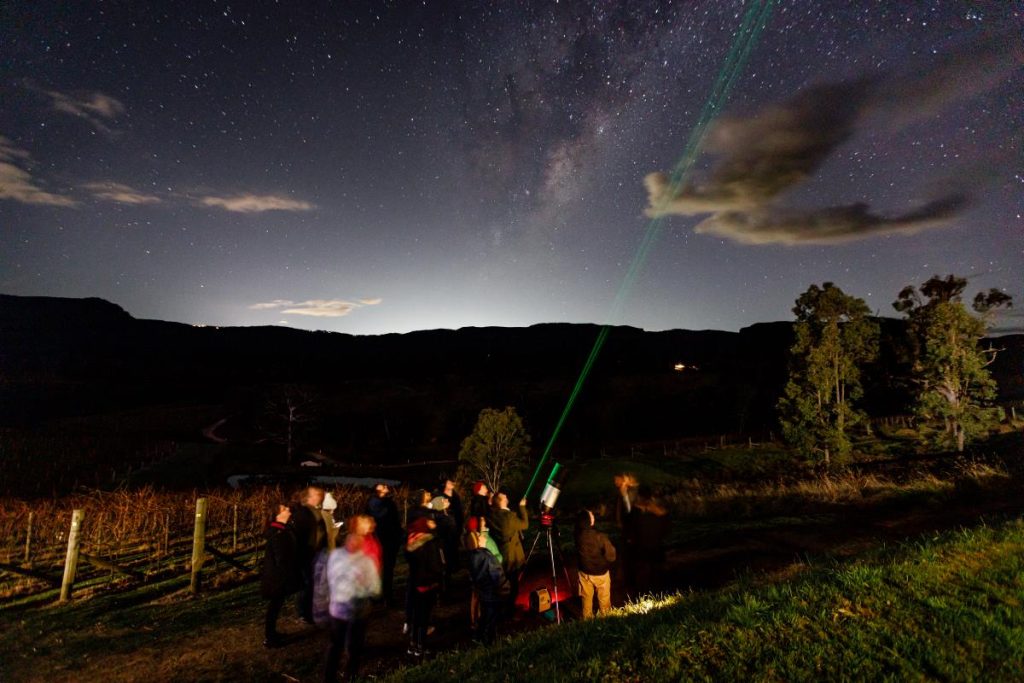
From stargazing tours to DIY adventures and amateur astronomy clubs, the Blue Mountains has many options for exploring the night sky. (Photo: Liam Foster)
By Linda Moon
Taken for granted, the night sky is integral to the health of the whole natural world, including our own health and wellbeing. Local Blue Mountains astronomy groups are helping us rediscover and protect it from light pollution.
Key Points:
- The Blue Mountains is one of the best locations for stargazing and astronomy close to Sydney.
- Darkness is critical to environmental and human health but dark skies are diminishing due to human activities. There are things you can do to make a difference.
- Local astronomy groups with support from Blue Mountains City Council are working to establish a Dark Sky Park in Linden.
I’m standing in a dark field in the country. My eyeball, pressed to a telescope, is focused on a shining orb with a dazzling halo suspended in the vast velvety blackness of space.
“Whoah!” It’s one of those moments when the English language fails.
Blue Mountains Astronomical Club
Behind me, voices crawl out of the darkness. The shadowy shapes of the Blue Mountains Astronomical Club (it’s their first public open night) shift from one big telescope to another.
In astronomy – as in photography – it’s all about the gear and epic subject matter. Tonight, the club members are freely sharing it with my family. The Tarantula Nebula. Close-ups of craters of the moon. Jupiter. Sirius. Distant galaxies. Better than Netflix, there’s something deeply connected and palpably real about a bunch of humans sharing the dark and the wonders of creation.
“It makes you wonder what the point of all this [outer space] is,” muses Jason, owner of the scope I’ve been peering through. I can’t see his face. At 9.30pm, Hampton is a dark place.
In a moment reminiscent of Star Trek, Alexander Massey (the club’s founder and a natural educator) shoots a laser beam at the heavens. For our benefit, he traces out the shapes of the constellations. The beam darts over to cloudy clusters of stars. The nearest to Earth is the Andromeda Galaxy. Even so, it’s around 160,000 light years away, Alexander says. Using the analogy of jumping in your car and hitting the hyperdrive button, he says “it will take 160,000 years to get there.”
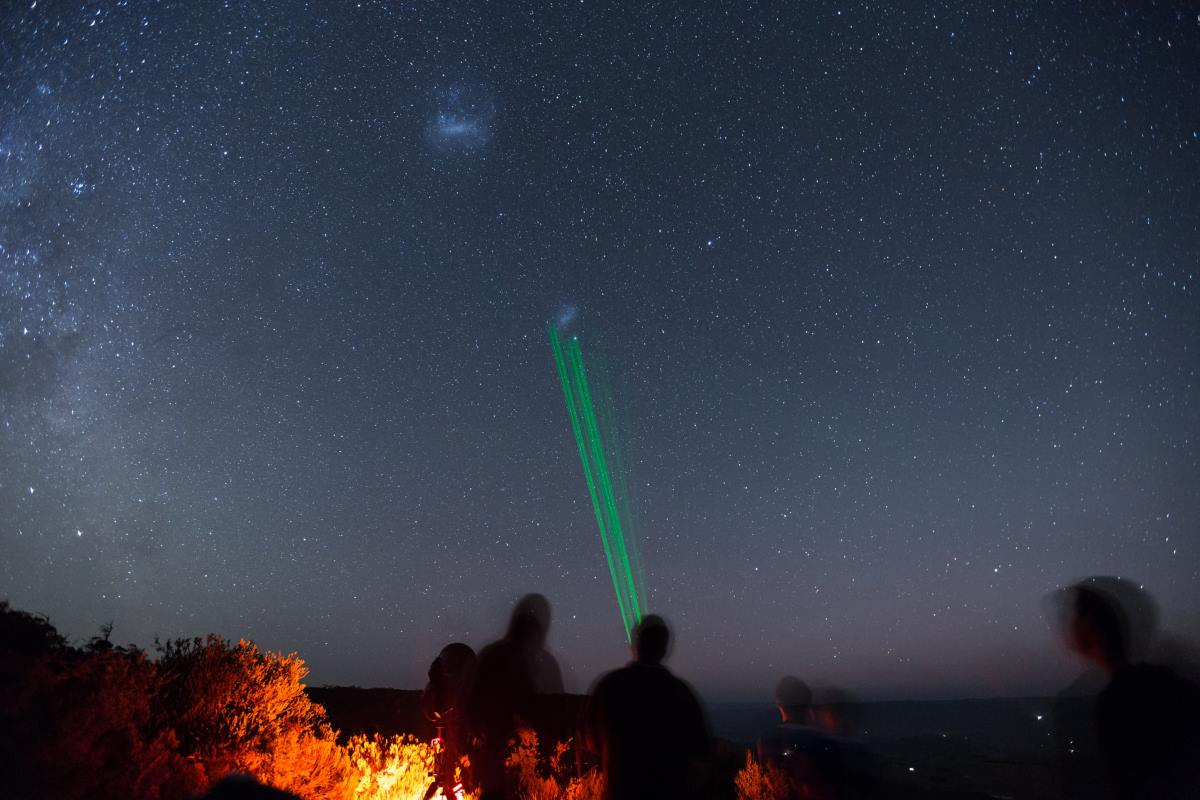
Blue Mountains Astronomical Club enjoying a night out with the stars. (Photo: Alexander Massey)
Magic and mystery of the night sky
Clustered around Nick’s telescope, the group is thrilled about the Great Red Spot. The most famous feature of Jupiter, it’s a persistent gigantic storm (the biggest in the solar system) that’s been raging over the surface of the planet for centuries, Alexander says.
Another boon of the night is the shadow transit of an eclipse on Jupiter. “Seeing the Great Red Spot during an open night, and then to see a shadow transit of an eclipse, that’s like winning the lottery,” Alexander enthuses.
Peering through the telescope, I’m besotted by two moons hovering around the planet. Over 146 moons have been identified in Jupiter’s orbit. Multiple planetary moons are common in outer space, Alexander reveals: one of many tantalising astro tidbits.
Dark skies of the Blue Mountains
Ironically, Alexander lives in the eastern suburbs of Sydney. “The best skies are away from the city,” he explains. “You’re forever fighting conditions.” This includes air and light pollution, mist and dew (which fogs up optics).
Researching micro-climates years ago led the club to a site in Katoomba.
But suitable dark, accessible sites are literally shrinking, he says. Growing light pollution and unavailability of the Katoomba site, have meant the club have moved their activities to Hampton.
“On nights when there is no mist, the prevailing conditions are bone dry, extremely transparent sky and outstandingly good for astronomy.” – Alexander Massey.
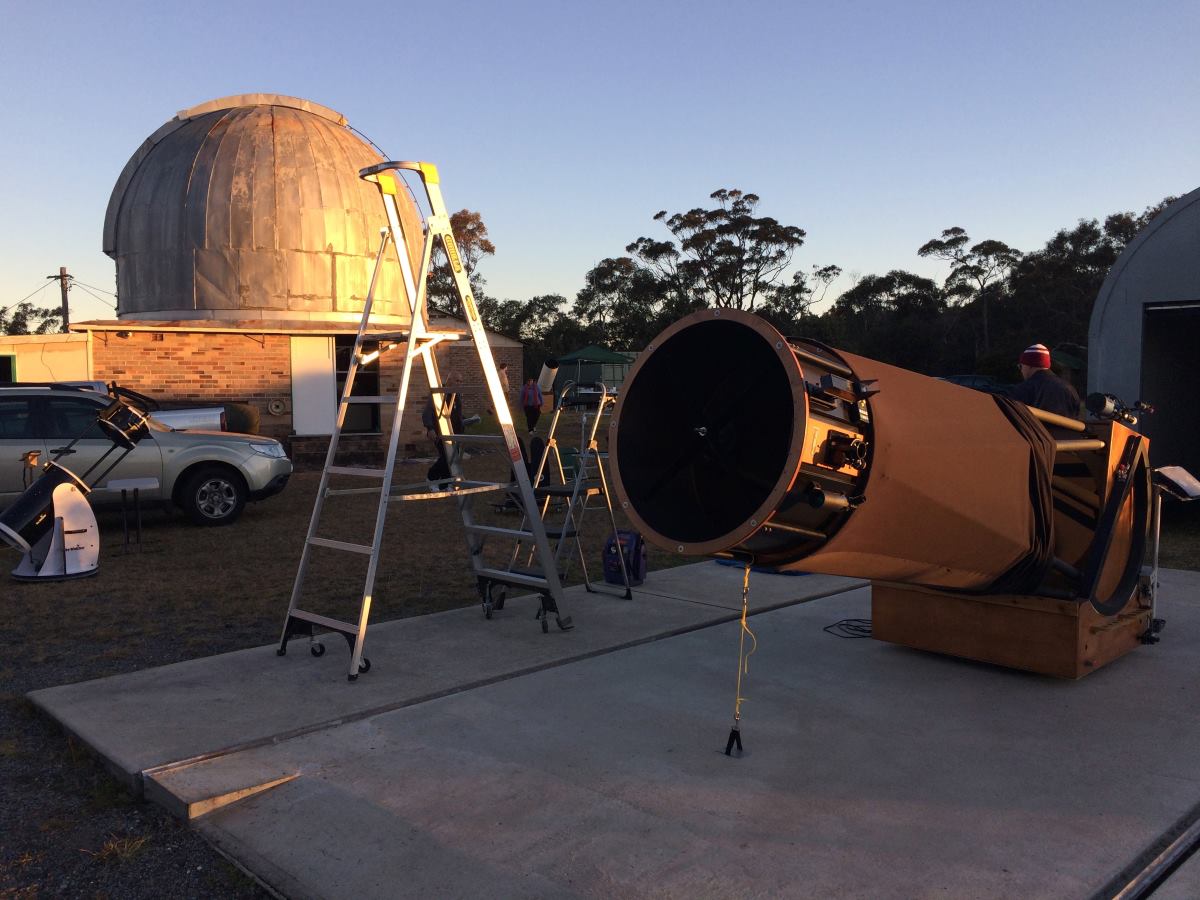
Linden Observatory is the biggest publicly accessible telescope in NSW. (Photo: Linden Observatory)
Linden Observatory
Also concerned about preserving the Blue Mountains night sky is Ian Bridges, a trustee of Linden Observatory. The observatory, established in the 1940s, is a heritage and educational site. Crucially, it has the largest publicly accessible telescope in NSW, he says.
Historically a dark place – it’s located on a plateau bound by national park on 40 hectares of land – light from Sydney is a growing problem for the observatory. It’s additionally been affected by flight paths.
Aircraft have bright navigation lights, but a bigger problem is turbulence, Ian says. Astronomy relies on what’s known as good ‘seeing’ conditions. Essentially, this is about a stable atmosphere: “When things don’t move you can see more detail.”
Aircraft form turbulence and also contrails which can disrupt seeing conditions and visibility over very large areas, he says. The effects of a plane flying past can last for hours afterwards.
On the upside, the local community is taking action.
Advocacy for the skies
“Blue Mountains City Council is supporting efforts to have Linden recognised as Australia’s first Dark Sky Community” – Ian Bridges.
Certification through the Australasian Dark Sky Alliance (ADSA) would involve reducing lighting in the village.
“More efficient lighting would start to give the stars back to people,” Ian says. He’s met school kids from Sydney who’ve never seen the Milky Way before.
The night sky is something we take for granted until it’s taken away. “It’s part of our long-term heritage as humans on the planet,” Ian says. “It’s tied up with our creation stories. There are so many stories about the constellations and mythology around it, the zodiac and the gods, and in indigenous astronomy; the Dark Emu.
“To be losing that in modern times because of technology, it’s just another way that people get out of touch with nature.”
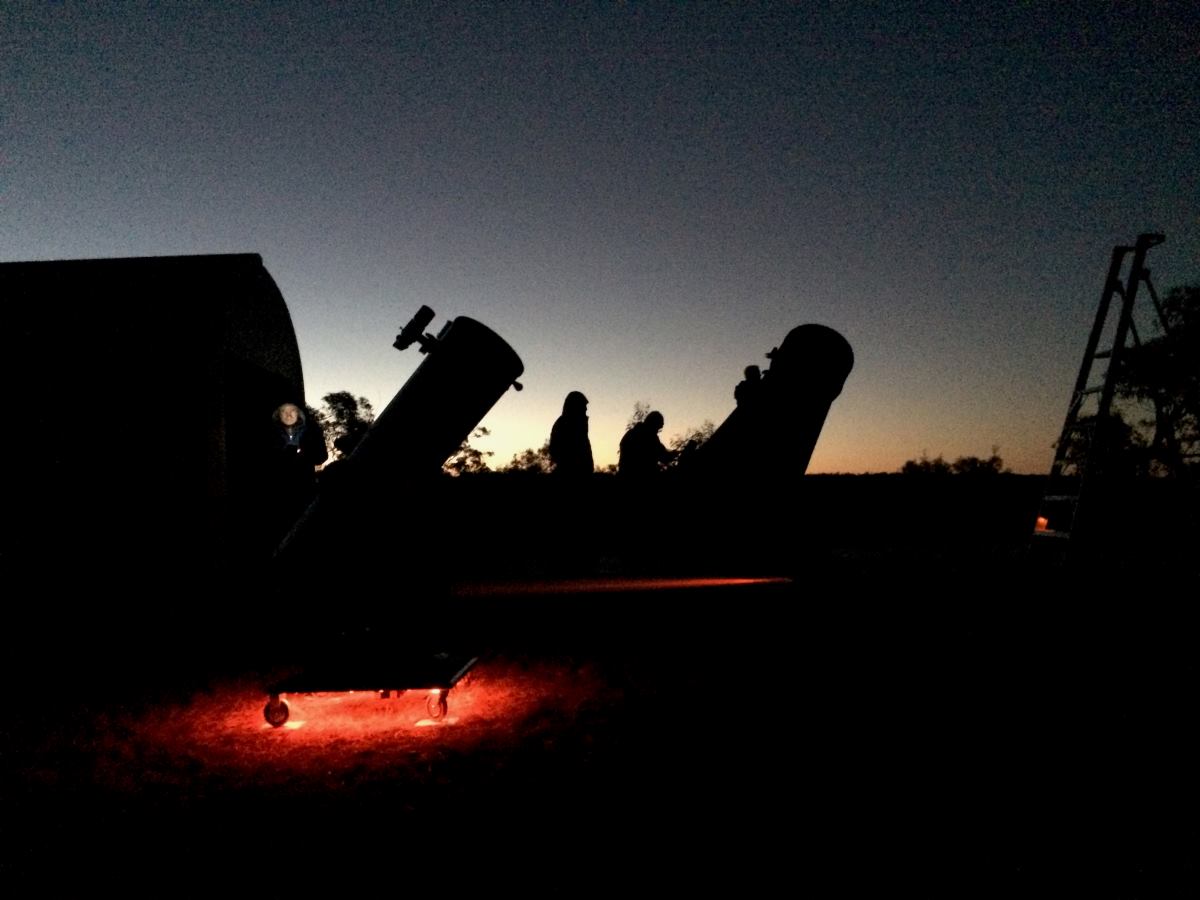
Linden Observatory, an advocate for the Dark Sky Movement. (Photo: Linden Observatory)
Growing light pollution
Local astronomer and co-founder of Blue Mountains Stargazing, Dimitri Douchin, is another Dark Sky advocate.
“Darkness is essential to the circadian rhythms of humans and other life forms, biodiversity and ecology.” – Dimitri Douchin.
Light pollution can disrupt migratory patterns, reproduction, plant cycles and more. Dimitri cites the example of the native Bogong Moth whose migration has been impacted by light pollution.
A growing body of research shows light exposure at night is linked to human health risks including poorer sleep and cancer. Lighting at night also contributes to greenhouse gas emissions.
“Light pollution is the fastest growing pollutant in the world, and increasing by almost 10 per cent each year.” – Australasian Dark Sky Alliance.
Which means a dark night sky could be a thing of the past for much of the world.
“We’re losing the fainter stars and we’re losing some of the star patterns,” Dimitri says. Satellites contribute to the problem as well and create new phenomena that may be puzzling or even frightening to remote communities, he says.
“The sky is an integral part of the culture, as is the landscape. If you dig out a mountain, then you’ve lost that landscape. If you do the same with the sky, if you send too many satellites, the sky is brightening and you lose some of the culture.”
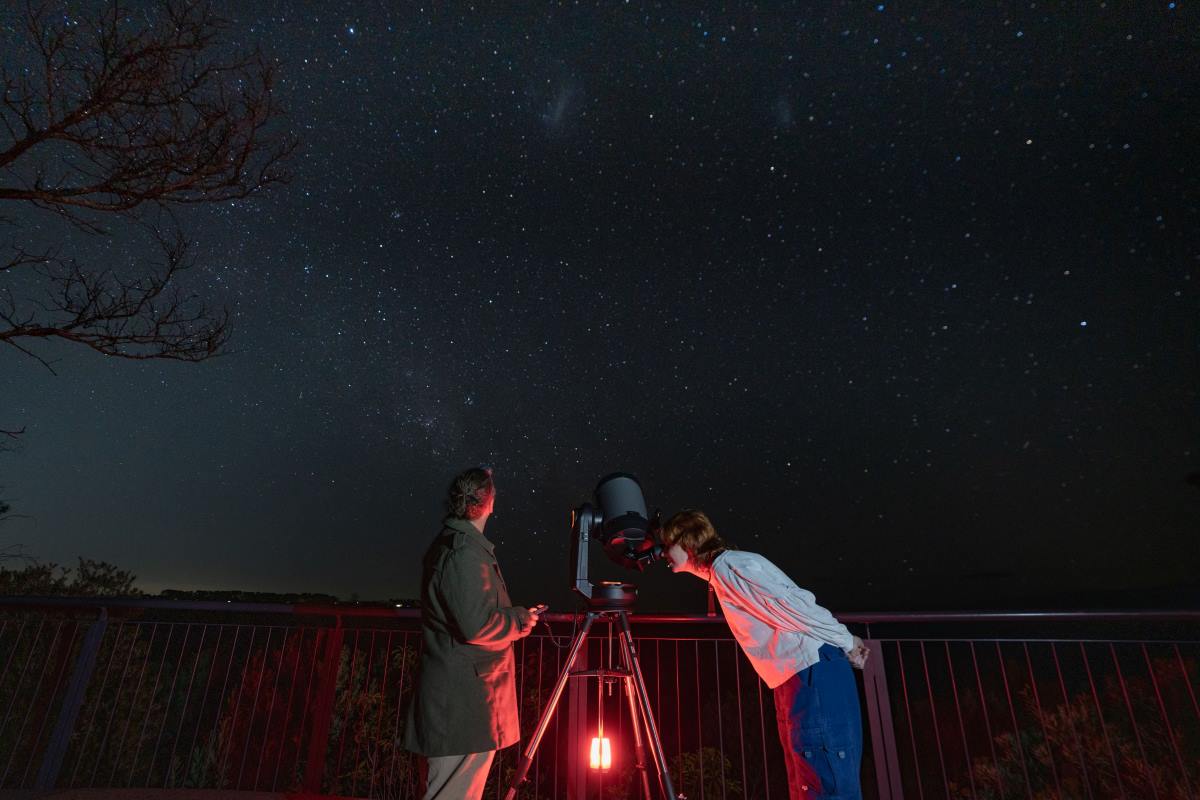
Astronomer Dimitri Douchin showing off the stars in the Blue Mountains. (Photo: Tourism Australia)
Blue Mountains Stargazing scores award
Dimitri, an adjunct researcher in cultural astronomy at Western Sydney University, reminds us that the night sky is the basis of meaning and calendars in all cultures. “The sky is a mirror to our identity. Every culture in the world has put meaning or stories into the sky.”
As dark skies are becoming more rare, more people are curious to see them, he says. His awarded tours (Blue Mountains Stargazing won Bronze for the NSW Tourism Award in the Tour Operator Category 2023) showcase the wonders of the heavens to many. This includes people from Asia who’ve never seen a starry sky.
“For me, it’s about feeling alive,” he says.
“When we see a starry night we become children again. We’re in awe; we have that sense of connectedness and togetherness where the focus point is not a TV.” – Dimitri Douchin
“Everybody has a personal relationship with the sky. And that’s what makes it so global to everybody.” added Dimitri.
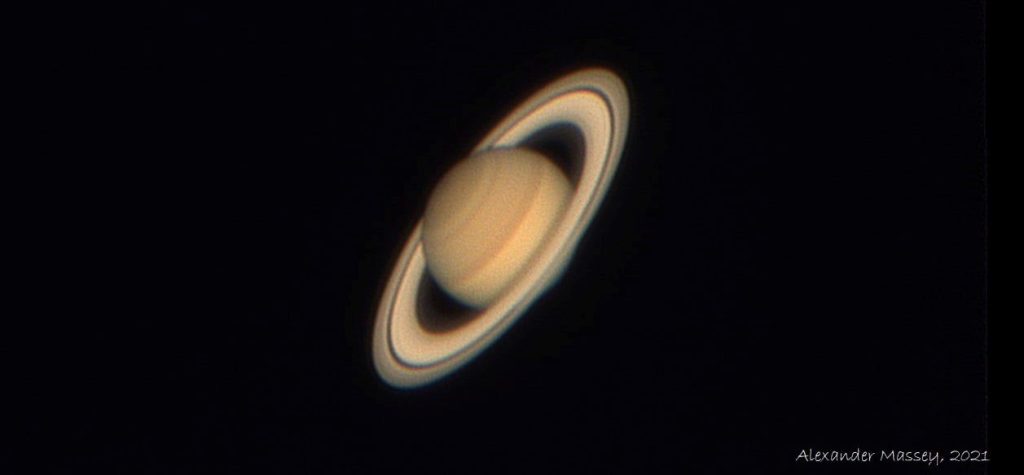
Saturn is currently on show. The magical world of astronomy and stargazing:– a thing in the Blue Mountains. (Photo: Alexander Massey)
Where to go stargazing in the Blue Mountains
“You don’t need a telescope. Binoculars are fantastic astro-tools. I also recommend an app called Skysafari.” – Alexander Massey
Blue Mountains Stargazing
Astronomer led tours including storytelling, the use of lasers to identify constellations, and the chance to peer into a telescope, run every Friday, Saturday and Sunday at Wentworth Falls picnic area. Gift vouchers and high-end tours are also available.
https://www.bluemountainsstargazing.com.au
Linden Observatory
Monthly public viewing nights (soon to expand to more often) run by Western Sydney Amateur Astronomy Group for a small contribution of $10 towards upkeep of the site.
Book at https://www.wsaag.org/index.php/club/linden-observing-site
Blue Mountains Astronomical Club
Monthly meet-ups for members, possible future public events. You can also contact the club to organise paid private, group or school tours.
https://www.facebook.com/groups/1927690317312646
DIY Stargazing
Ian and Alexander recommend the following hot spots:
- Hargraves Lookout, Mount Blackheath Lookout (and other lookouts in Blackheath)
- Katoomba Falls Reserve
- Narrowneck, Katoomba
- Govetts Leap and other lookouts in Katoomba
“Even close to a big city, we can still do something that’s meaningful to preserve the night sky.” – Dimitri Douchin.
Take Action:
- Learn more about environmentally sensitive lighting from ADSA (the Australasian Dark Sky Alliance.)
- Light only the area you need, using the lowest intensity you can, and avoiding light spill by shielding with curtains, etc. Choose downward facing light and (if you need outdoor lighting): sensor lighting. Use warmer red-spectrum lighting over blue-spectrum light. The latter has a worse impact on wildlife and human health at night.
- Get your home or business certified as Dark Sky Sensitive.
Share this article:
This story has been produced as part of a Bioregional Collaboration for Planetary Health and is supported by the Disaster Risk Reduction Fund (DRRF). The DRRF is jointly funded by the Australian and New South Wales governments.
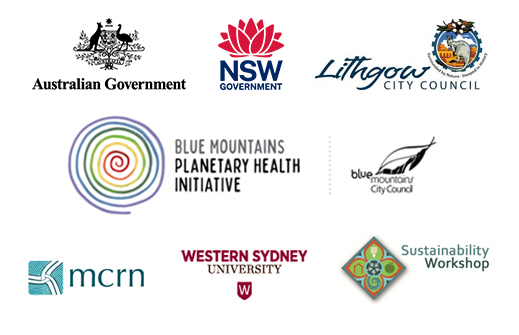
More from around the region
The fabulous Gang Gang Farmers Market in Lithgow will be back when the weather warms up. Meet some stallholders and whet your appetite for their Spring re-opening in Lithgow Area Local News (link in profile)
https://lithgowlocalnews.com/gang-gang-farmers-market/
#markets #lithgow #localproduce #planeteryhealth #buylocal
Imagine having enough absorbent green spaces, water tanks and underground water storage to capture the damaging stormwater that runs off hard surfaces in extreme wet weather events; imagine having enough stored water and the ability to clean all the water we use so that we are prepared for future drought and fire seasons. Join the discussion about how we can do this at a Free Water Symposium on Friday 26 July at the Planetary Health Centre. Bookings essential (link in profile): https://www.eventbrite.com.au/e/future-proofing-with-circular-water-tickets-943977701717
#circularwater #greywater #blackwater #stormwater #waterrecycling #togetherwecan #disasterriskreduction #beprepared #extremeweather #planetaryhealth #bushfire #flood #drought
Beyond the Yellow Bin: Surprising Things You Can Recycle – and How to Do it!
Here’s a guide to help Springwood and Greater Blue Mountains residents access the most effective recycling options available in the local area. Read more in Springwood Area Local News (link in profile): https://springwoodlocalnews.com/recycling-in-the-blue-mountains/
#recycling #circulareconomy #reuse #reduce #recycle #bluemountains #springwood #planetaryhealth #togetherwecan
Hamish Dunlop interviews prize-winning children’s book illustrator, mother, activist and proud Bundjalung woman, Charmaine Ledden-Lewis about the power of storytelling and how we can inspire our children to build a better world. Read more in Blackheath Area Local News (link in profile): https://blackheathnews.com/charmaine-ledden-lewis/
#changethestory #abetterworld #powerofstorytelling #bundjalung #illustrator #firstnations #planetaryhealth #blackheath #bluemountains
Broken chair? Blown amp? Busted washing machine? They don’t have to be thrown away! These Mid Mountains fixers and makers will revive them. Read more in our Mid Mountains Repair Guide: Choosing Longevity in an Age of Disposability. You can find it in Mid Mountains Local News (link in profile): https://www.midmtnslocalnews.com/mid-mountains-repair-guide/
#repair #repairculture #fixing #reuserecycle #longevity #togetherwecan #thebigfix #planetaryhealth #midmountains #repairguide
In this video, Dharug artist Leanne Tobin talks eloquently about the critical importance of water and why it`s the theme of her two paintings in the Water for Life exhibition at the Blue Mountains Planetary Health Centre. View the paintings and learn more about the many ways we can work together to manage water better at our free Water Symposium next Friday 26th July. Bookings essential (link in profile): https://bit.ly/3LiuJWi
The full video can be viewed on our YouTube channel (link in profile)
#waterforlife #leannetobin #firstnations #waterissacred #planetaryhealth #watersymposium
Electric vehicles continue to grow in popularity across Australia, but many people are still uncertain about their benefits, feasibility, and availability. To try and help local communities in the Lower Mountains have a better understanding of what EV’s can offer, @parentsforclimatebluemountains are hosting an EV Showcase in Blaxland on Saturday 27 July to help bust the EV myths and provide helpful, up-to-date and accessible information. 33 Hope Street Blaxland between 10 am and 12.30 Read more in Lower Mountains Local News (link in profile): https://lowermtnslocalnews.com/community-ev-showcase-blaxland/
#electriccars #blaxland #bluemountains #ev #planetaryhealth #towardszeroemissions
As part of our Water Demonstration Site at the Blue Mountains Planetary Health Centre we`ve installed a range of sprinklers to show people how to protect their homes from bushfire. Plumber Daniel Brown will be giving a tour at our upcoming event: Future Proofing with Circular Water on Friday 26 July. The event is free but bookings essential at https:bit.ly/4f78K1Z (link in profile) #bushfiresprinklers #beprepared #planetaryhealth
Global problems are creating renewed interest in traditional DIY skills like sewing. Here’s how a local grandmother is sharing her rag trade experience to make a difference and how you can get involved. Read more in Katoomba Area Local News (link in profile): https://www.katoombalocalnews.com/upcycling-fashion-workshops/
#skillshare #givingback #sharing #upcyclingfashion #sewing #patternmaking #repair #clothingadjustments #wastereduction #textilewaste #creativity #planetaryhealth
Calling all plumbers, builders, architects, engineers and any community members interested in learning ways we can manage water to reduce the impact of future droughts, floods and fires. On Friday 26 July we`ll be bringing together leaders in bushfire sprinkler system design, Hydraloop technology which can recycle 40% of your greywater, the program manager for drought from Sydney Water, and the designer of our 150,000l underground water storage system which will be capturing and cleaning stormwater for firefighting as a model for what we could build at the end of flame zone streets. Speak to a plumber about installing tanks and water systems and be in the running to trial one of two free Hydraloops we have on offer. This grant-funded event is free but bookings essential (link in profile):
https://bit.ly/4f78K1Z
This event is being supported by the Disaster Risk Reduction Fund which is funded by the Australian and New South Wales governments.
@hydraloop_systems @sydneywater @nswreconstructionauthority #greywaterrecycling #watertanks #firefighting #beprepared #drought #fire #flood #heatwave #bushfiresprinklers #planetaryhealth #disasterriskreduction
Our fortnightly Planetary Health Newsletter shares news about upcoming events, like our free Water Symposium on Friday 26 July, and stories from the Lower Mountains to Lithgow that are jam-packed with inspiration and a blueprint for the way forward.
Read it here and subscribe via any of our news sites (links in profile):
https://bit.ly/4cXQg2f
In this edition:
Katoomba Area Local News: Learning How To Upcycle Fashion with Sherlie McMillan
Mid Mountains Local News: Mid Mountains Repair Guide: Choosing Longevity in an Age of Disposability
Blackheath Area Local News: Charmaine Ledden-Lewis on Stories for a New World
Lower Mountains Local News: Busting The EV Myths: Community EV Showcase & Information Event Comes to Blaxland
Springwood Area Local News: Beyond the Yellow Bin: Surprising Things You Can Recycle – and How to Do it!
Lithgow Local News: The Gang Gang Farmers Market will Return in Spring!
#planetaryhealth #systemicchange #togetherwecan #solutions #constructivejournalism #watersymposium #hyperlocalnews
What an inspiring day at the Planetary Health Centre yesterday! We launched the Planetary Health Storytelling Network after a brilliant workshop with award-winning health writer and author Sophie Cousins on Our Community, Our Stories: Writing for Change. The Network will include all types of storytelling for planetary health: from songwriting to video, creative non fiction and visual arts. We`ll be having our first reading by Lorraine Shannon on the theme of GARDENS at 6.30pm on Thursday 8 August. All welcome to come along and share. SAVE THE DATE!
#planetaryhealth #changethestory #togetherwecan #storytelling #storytellingforchange #planetaryhealthstorytellingnetwork


